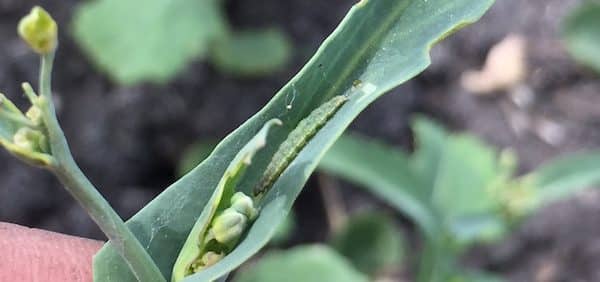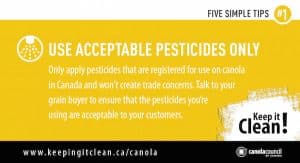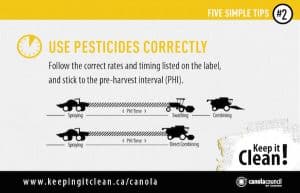Canola harvest is getting closer, especially for those in the southwest Prairies where lack of moisture has, unfortunately, pushed the crop along faster than anyone wanted.
Here are 10 things to think about and get tuned up in preparation for harvest:
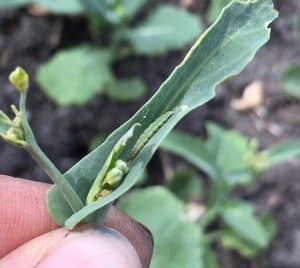
1. Keep an eye out for insects. The CCC Insect Scouting Guide can help with identifying pest and beneficial insects. Pod damage from insects, including lygus, bertha armyworm and diamondback moth larvae, tends to be the most costly damage at this time of year. That’s because plants well into pod stage are getting out of flowering — and once flowering is done, the plant can’t compensate for lost pods. If spraying is necessary, choose a product with a pre-harvest interval in line with when you expect to cut the crop. Confirm pre-harvest intervals here.
2. Do a disease survey with the help of your CCC Disease Scouting Guide. This Canola Watch article helps, too. The best time to check for disease incidence and severity is just before swathing when the plant is drying down and diseases are most advanced (and therefore easiest to see). Check stems for sclerotinia stem rot, clip crowns to check for blackleg and dig up roots to look for clubroot galls and root rots. See how the CCC agronomists recommend checking for disease in the Pre-Swath Disease Scouting video.
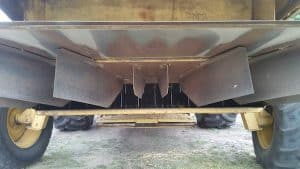
3. Look over the combine chopper and spreader. The most important tool for residue management (which has an influence on establishment of next year’s crop) is the combine. Put in new knives, if necessary. Many combine companies also offer chopper and spreader upgrades if the existing tool can’t match the spread width of the header. READ MORE
4. Take a few late-season variety plot tours. The best time to learn something about canola varieties for next year is to look at them now. What is the disease situation variety to variety? How are they standing up? How are maturities different? If making seed decisions before or during harvest, also make use of the last six years of canola variety information (in annual booklets and full searchable database) at canolaperformancetrials.ca.
5. Assess fields for suitability to swathing or straight combining. Brush up on seed colour change assessment and decide when you’d like to swath crops, noting that later-swathed crops tend to yield more because seeds on side branches have more time to mature and contribute to yield.
6. Will you use a preharvest product? If yes, check the application timing for each product (rules are quite product specific) and how fast each product works. READ MORE. Preharvest products can help if you’re straight combining canola or you see a lot of green weeds.
7. Watch the Harvest Management & Mitigating Loss video. Then work on a plan to measure losses out the back of the combine. READ MORE
8. Clean out the bins – but don’t use malathion. Clean them to remove treated seed and animal protein that may have been stored inside. READ MORE
9. Plan to put canola in bins with higher horsepower fans. Because conditioning is so important to canola and because pushing air through canola requires more pressure than pushing air through cereals or pulses, canola storage bins should have aeration and those fans should be the highest horsepower fans on the farm. Read Point 6 of this article.
10. Take the Canola Watch quiz, read one more article from your last Canola Digest issue or look up a canola agronomy topic you had a question about in the Canola Watch key topics, search button, or question box.

